Strong Arm of the State: Alexander Chekmenev's Post-Independence Ukraine Passport Photos
TIME
May 13, 2014
In 1994, the local government in the city of Luhansk, in eastern Ukraine, found itself in need of a photographer. The Soviet Union had just collapsed a few years earlier, and like all of its newly independent states, Ukraine had to go through the process of issuing new passports to all of its citizens, roughly 50 million of them. As if that wasn’t enough of a problem, many of those citizens were shut-ins, elderly and bedridden, and in order to take their passport pictures someone had to go around making house calls with a camera. In Luhansk, one of the officials knew a guy who knew a guy who worked at a local photo studio. His name was Alexander Chekmenev. So that’s who got the job.
Had it gone to another candidate, the result would probably have been nothing more than a stack of tiny portraits, monochromatic and blank as the portable background against which they were taken. But Chekmenev, who was 25 at the time, turned the project into a study of life and death in the Soviet Union.
Over the course of the following year, he and a couple of social workers went around the Shanghai neighborhood of Luhansk, a cluster of weathered old cabins built in haste during World War II, and photographed the elderly people who lived there. Most of them had been born at roughly the same time as the Bolshevik Revolution of 1917, so their lives had spanned the course of the entire communist experiment and were, in many ways, a reflection of its outcome. What Chekmenev captured was the life these people ended up with when that experiment failed.
The series, which he titled Passport, can be difficult to look at, even painful. The squalor of these rooms and the people who inhabit them, surrounded by everything they own, provokes the urge to apologize and turn away, as if the viewer had stumbled onto something that was just too sad and private for the eyes of strangers. That is the reaction Chekmenev wanted to challenge.
“There was this rule in the Soviet Union that the actual conditions of life should be kept hidden, like they were something shameful,” he says. “What was shown in public were the made-up faces of officials and celebrities, or the smiling masses on parade. But that was not the reality of where we lived.”
In Soviet dogma, the idea of sacrifice was paramount, but the suffering it caused was taboo. Soviet citizens were asked to believe that eventually a communist utopia would dawn, maybe in five years, maybe in fifty, and alleviate all hardship. But until then, they were supposed to persevere – “equal in poverty,” the saying went – with official emphasis on the fact that they were equal and not the fact that they were poor.
People were, for the most part, aware of what they lacked. They understood that toilet paper shortages are not the mark of a viable economy, and that cramming three families into a communal apartment is not a reasonable way to live. Homo Sovieticus was not a race of fools. But no one felt any particular desire to draw attention to these truths, let alone capture them in a series of photographs, because to do so would mean confronting the fact that the experiment had failed and all these years of deprivation were for nothing. Some people in the Soviet Union had the courage to admit that, at least to themselves. Chekmenev wanted to document it.
For all of his life, he had watched his father go to work each day in the same factory – the Lenin Ammunition Plant in Luhansk, which produced bullets – and after retirement he had almost nothing to show for it. “That was the deal,” says Chekmenev. “You let the state suck all the life out of you, and then it leaves you at the end with the absolute minimum, some bread, some milk, some pills for your pain. That is your final reward.”
So on a personal level, Passport was meant as a repudiation of the system that had ground up Chekmenev’s father like the millions of others who'd been caught in its gears. It was a statement of refusal to follow his father's path, and it delivers that message like a punch to the gut. But the photographs in this series go well beyond that political dimension. The perspective they offer on death, and the way each individual deals with its proximity, manages to transcend the social and historical context in which these photos were taken.
That is just what people did, and as a native of Luhansk, Chekmenev grew up inside this world. What seems uncanny is his ability to step outside of it and notice the absurdities that his peers would ignore as routine.






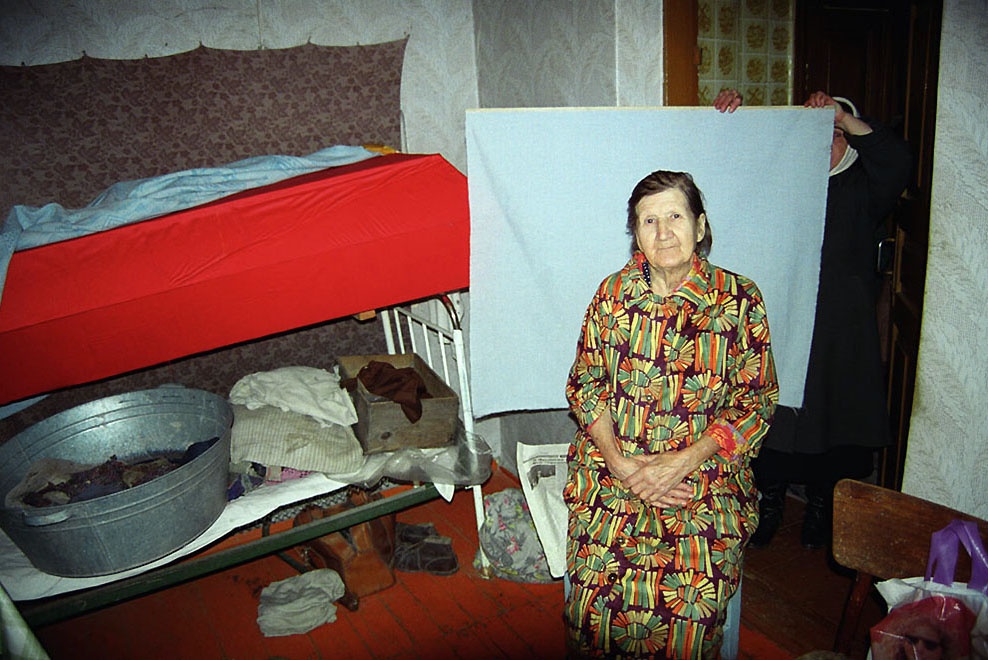
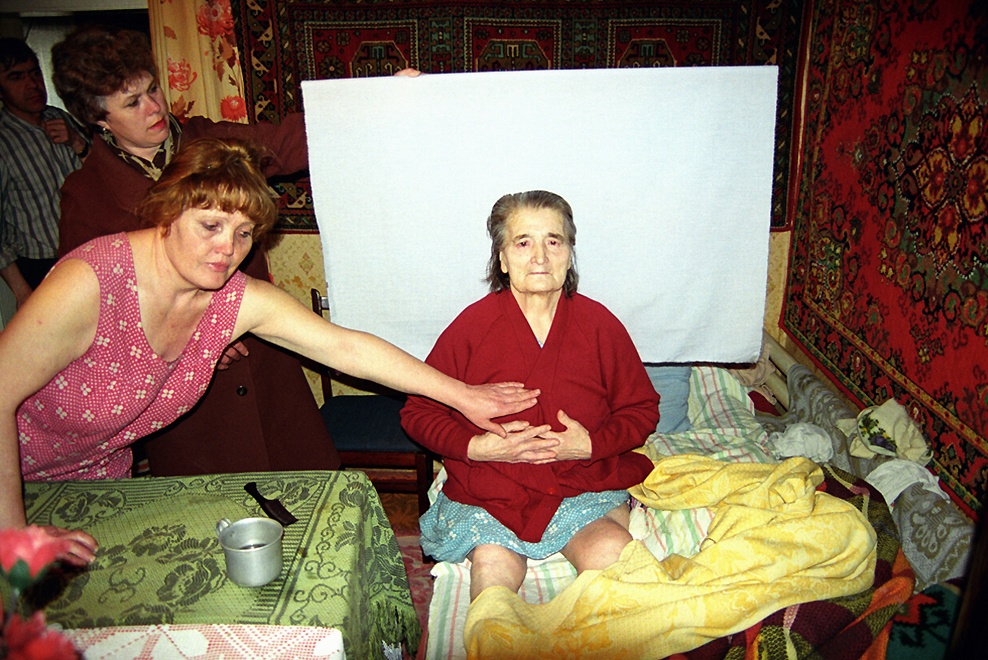
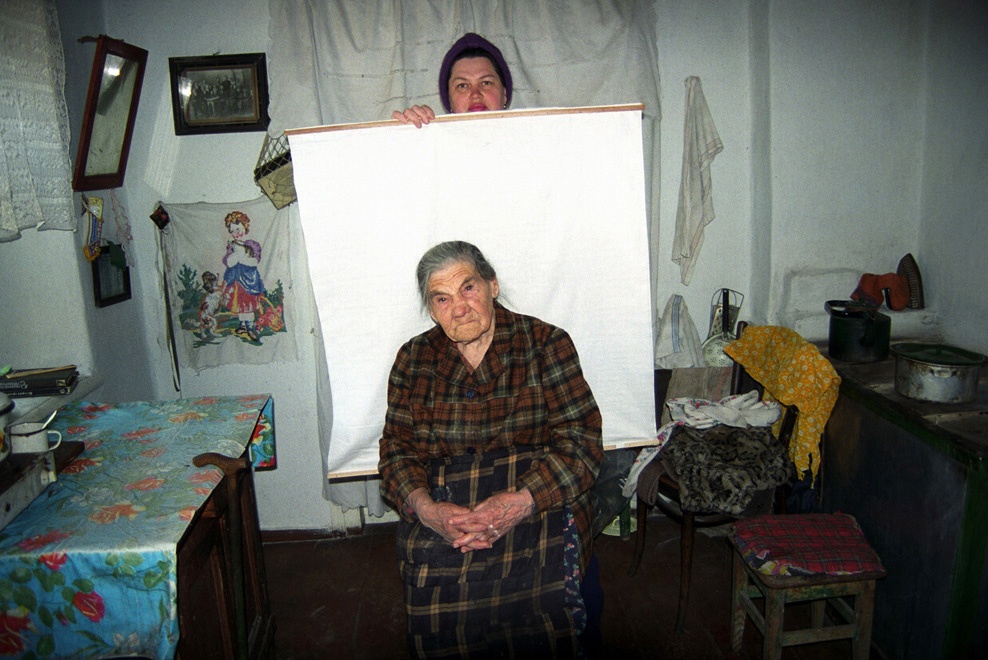
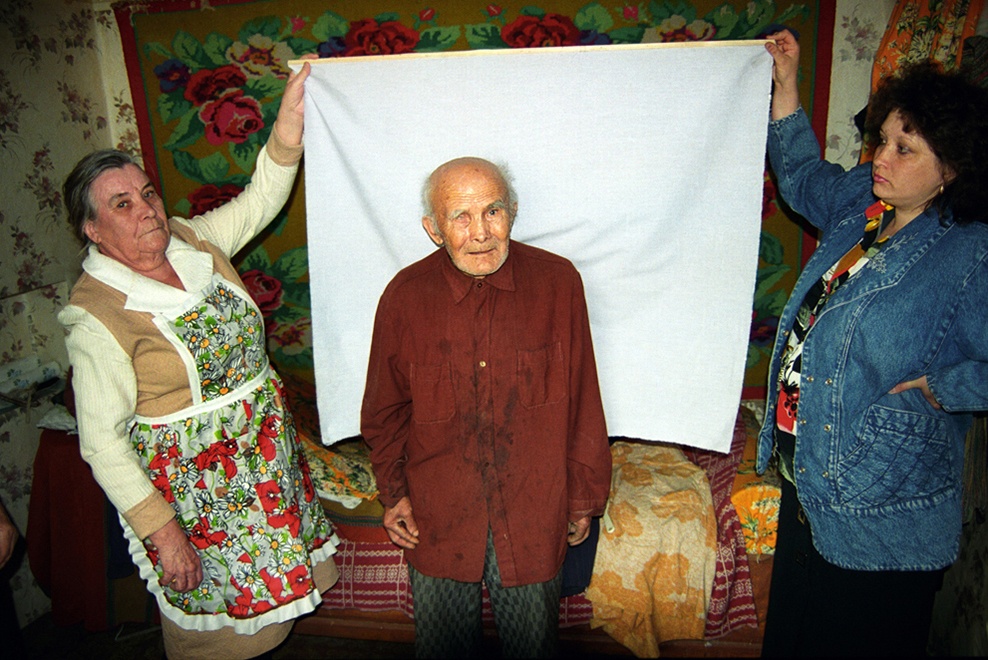
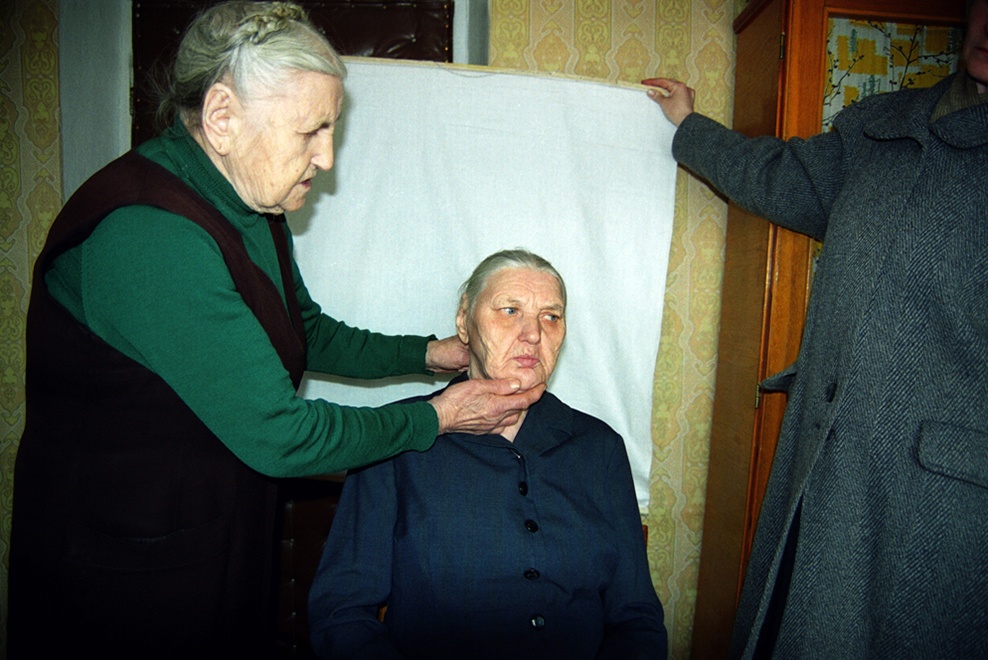
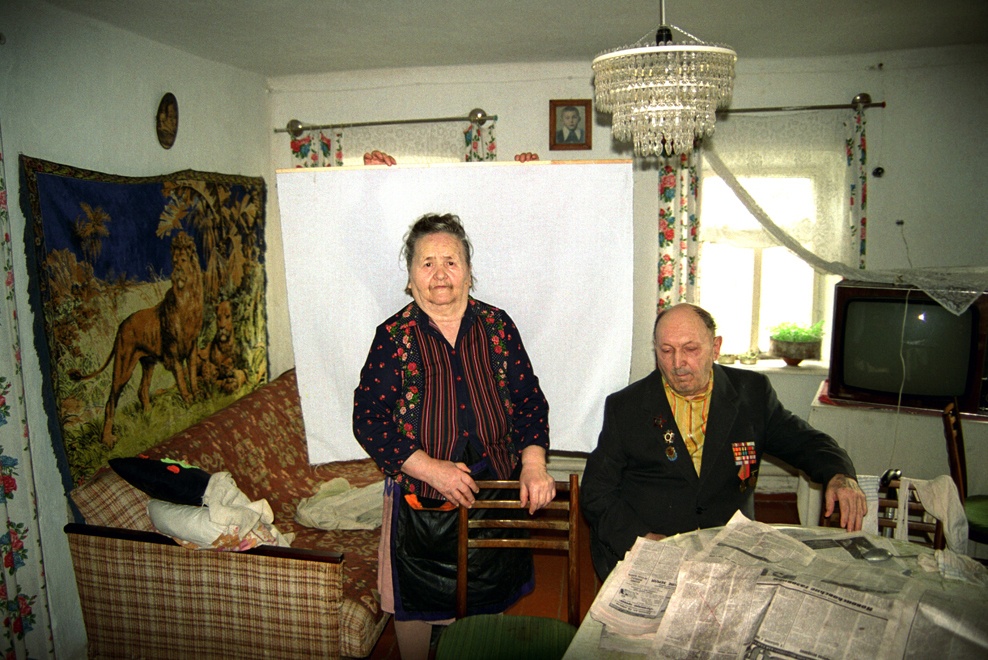
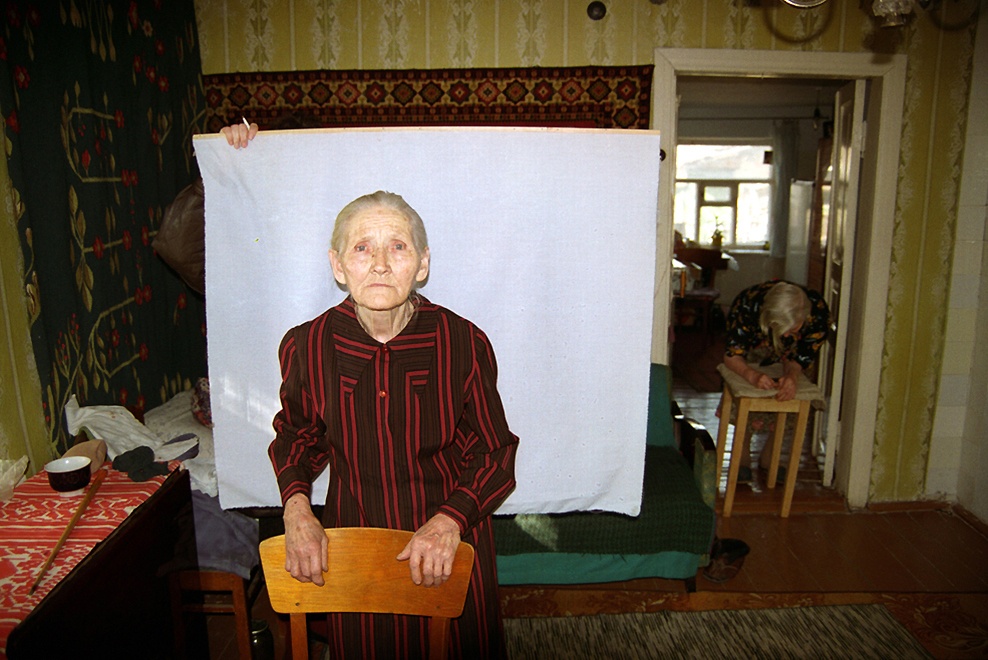

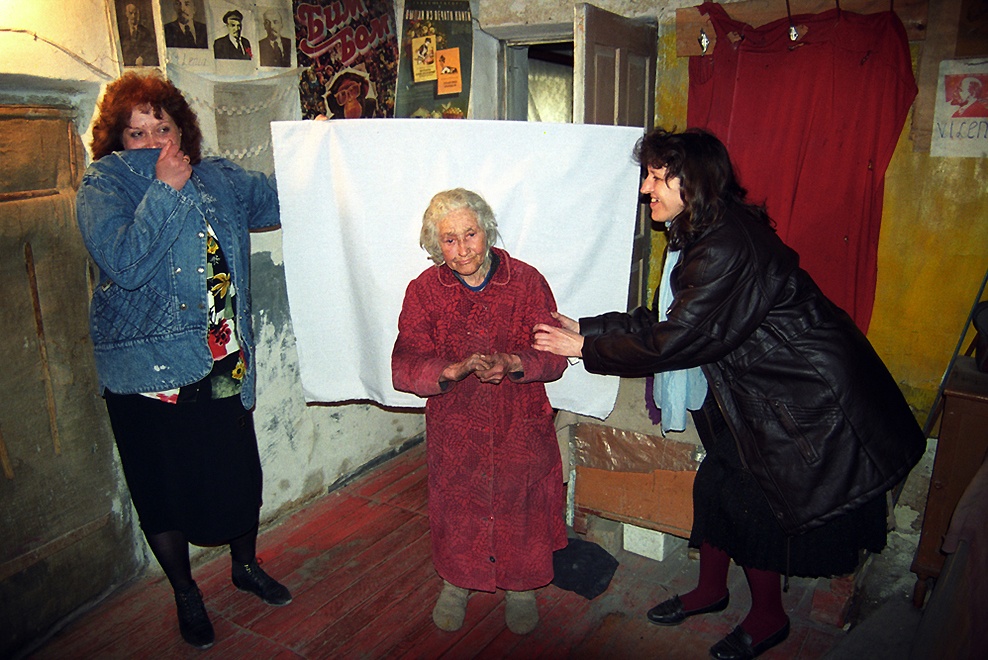
- 2022"Citizens of Kyiv"
- 2018-2020DELETED
- 2022-2023Faces of War
- 2018-2020Good luck gentlemen or all business in a hat
- 2004Orange Revolution
- 1999-2019ODESSA PEOPLE
- 1995PASSPORT
- 1994-2011DONBASS
- 1994-1997Random non-randomness
- 1994-1999Street people
- 1992-1997Black&White
- 1994-1995Ambulance
- 1994-2013Easter
- 1999 Psychiatric hospital
- 2000-2012Donbass 6x6
- 2014Euromaidan
- 1993-2017People streets
- 1999-2009ODESSA STREETS
- 2014-2016War in Donbass
- 2014WARRIORS
- 2014-2015WAR-TORN
- 2002-2012Victors
- 2016Roma camp
- 2004-2014Veterans
- 2003-2017Flea market
- 2003-2004CRANBERRY
- 1999LILIES
